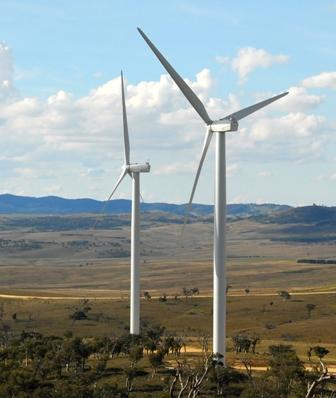The Australian Energy Market Operator has shot down claims that Australia cannot accommodate any more wind and solar, saying that the challenge is not so much technical as how to design the appropriate market signals and regulation.

“Rules and regulations that govern this industry have been designed in a different era,” said Frank Montiel, executive officer of markets at AEMO at a conference hosted by the Energy Networks Association in Brisbane on Wednesday.
“So we need to adapt. We need to see where the new technical solutions may lie, and ensure that the framework is flexible enough to accommodate them.”
The position of AEMO, whose job is to ensure the running of the national grid and that the lights stay on, will be reassuring to both the South Australian government and the renewable energy industry, which have come under extraordinary attack in recent weeks because of high wholesale market prices caused by soaring gas prices and repairs to the grid interconnector.
The attacks have been led by the Murdoch media and fossil fuel lobbyists, but have also been echoed by many in the Coalition – at state and federal level – despite environment minister Josh Frydenberg saying that renewables were not to blame for the recent price spikes – in fact, he noted, the price spikes used to happen a lot more regularly before the build-out of wind and solar.

South Australia now sources around 45 per cent of its electricity from variable sources such as wind and solar, which AEMO says is the highest penetration of “non-synchronous” generation in the world. That percentage could break 50 per cent in the next year.
But Montiel says there are numerous possible solutions to accommodate wind and solar, including battery storage in homes and at grid level, using wind farms to provide frequency control and other ancillary services, as they do oversees.
Montiel’s comments echo those of leading economist Ross Garnaut, who said that grid-scale battery storage technology is ready to go in Australia, an observation that would be endorsed by the likes of Ergon Energy, Ausnet and Western Power.
However, those network assessments have been made based on the value of storage to the network, in avoiding the cost of new poles and wires.
What has not yet been unlocked in the Australian market is the value of storage to the wholesale energy market, and providing the ancillary services to keep the grid stable as more coal generation is retired and gas-fired plants become too costly to run.
This is the subject of various rule changes being considered by the market regulators, such as the switch to 5 minute settlement from 30 minute settlement to encourage fast response technology – though this particular rule change is being resisted by the owners of coal and gas generators.
Next week, AEMO will release an update on its analysis of the sort of market and regulatory mechanisms needed to encourage the technology to address these issues.
Montiel says the market has been designed around a system that was itself designed a century ago, and needs to keep up with new technologies.
“We need changes to rules, regulation and policies,” he said, noting that the generation mix was changing from fossil fuels to renewables, demand patterns were changing, consumers were becoming more pro-active with their own power systems and storage, and new business models were emerging.
“We are convinced that the potential technical solutions are about. But it is difficult to encourage them if we can’t change regulations.”
The four priorities for AEMO are on the provision of frequency control, the management of “extreme power system conditions” (such as losing the interconnector); system strength; and the visibility of distributed resources.
“We haven’t identified any NEM-wide system issues,” he said. “We are exploring those particular conditions and times where challenges are expected.”
The visibility issue is an interesting one. Montiel said that, within a decade, the market had gone from the position of having generation from mostly large-scale registered plants and knowing how they behave, to having many gigawatts of distributed energy (rooftop solar) and “not knowing where it is or how much there is.”
Hence one of the focuses will be on how to aggregate distributed technology, mostly through smart software, along with smart inverters, home automation and the internet of things.
Other options will be using wind turbines to provide market ancillary services – as they do in Europe and North America, but not yet in Australia – and looking at grid-scale battery and other energy storage, as well as solar thermal plants with storage.
Interesting insight came from Catherine Sandoval, a commissioner with the California Public Utilities Commission, which is charged with ensuring the state meets its targets of 50 per cent renewables by 2030.
She saw great potential in smart inverters, which could be used to exploit the solar and storage technology that is being installed in homes and businesses.
Indeed, CPUC has been encouraging battery storage with the world’s biggest storage mandate – it actually prohibits the use of diesel generators for use in demand response on the grid.
“There is huge potential in smart inverters – they are not as smart and cost less than the average smart phone. But let’s make this behind-the-meter solar more visible, and dispatchable. Why wouldn’t we be doing that?
“Consumers just want to plug things in and have them work. We have got to work behind the scenes and make sure they do work.”
California has had its share of energy crises, most notably when Enron brought down the utility industry with market manipulation.
“We have stress tested with 50 per cent renewable goal and asked if we can do it with reliability and no rate shock. And they said yes.”
She pointed to utility scale solar, which is falling in cost to 5c/kWh and is competitive with gas and coal. Nuclear plants are closing, and asking to close, she said, “because they can’t make the economic case to stay open.”










